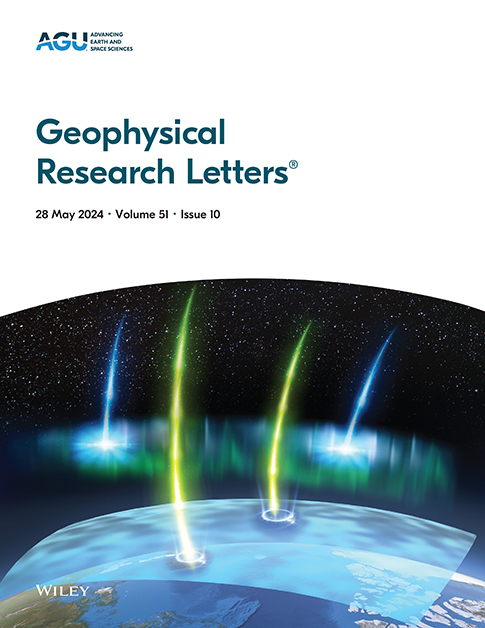从Ni稳定同位素组成推断灶神岩与中黄铁矿母体的吸积与分异
IF 4.6
1区 地球科学
Q1 GEOSCIENCES, MULTIDISCIPLINARY
引用次数: 0
摘要
为了研究Vesta小行星4的吸积和分化,我们提供了中黄铁矿、长绿岩和深成岩的高精度Ni稳定同位素数据。辉长岩和闪长岩中的Ni同位素变化主要是由动力学扩散和球粒陨石污染主导的,因此不适合重建灶神星的原始Ni组成。中黄铁矿的平均δ60/58Ni值为0.119±0.044‰(2SE),代表了灶神星或中黄铁矿母体的整体和核心Ni同位素特征。该值与地球相似,但与球粒陨石、铁陨石和ureilites的值不同,表明早期太阳系中前体物质和Ni同位素的不均匀性不同。pmelt模拟结果和富含橄榄石的样品MIL 07001支持岩浆海洋结晶是灶神星的关键演化阶段。撞击熔体重长岩NWA 5480中异常高的δ60/58Ni可能反映了蒸发,突出了Ni同位素作为行星挥发损失示踪剂的可能新应用。本文章由计算机程序翻译,如有差异,请以英文原文为准。
Accretion and Differentiation of Vesta and the Mesosiderite Parent Body Inferred From Ni Stable Isotope Compositions
We present high‐precision Ni stable isotope data for mesosiderites, eucrites, and diogenites to investigate the accretion and differentiation of asteroid 4 Vesta. Ni isotope variations in eucrites and diogenites are dominated by kinetic diffusion and chondritic contamination, rendering them unsuitable for reconstructing Vesta's primitive Ni composition. In contrast, mesosiderites yield an average δ60/58 Ni value of 0.119 ± 0.044‰ (2SE), representing the bulk and core Ni isotopic signature of Vesta or the mesosiderite parent body. This value is Earth‐like but distinct from those of chondrites, iron meteorites, and ureilites, suggesting diverse precursor materials and Ni isotope heterogeneity in the early Solar System. Results from pMELTS modeling and the olivine‐rich sample MIL 07001 support magma ocean crystallization as a key evolutionary stage on Vesta. Anomalously high δ60/58 Ni in the impact‐melt diogenite NWA 5480 likely reflects evaporation, highlighting a possible new application of Ni isotopes as tracers of planetary volatile loss.
求助全文
通过发布文献求助,成功后即可免费获取论文全文。
去求助
来源期刊

Geophysical Research Letters
地学-地球科学综合
CiteScore
9.00
自引率
9.60%
发文量
1588
审稿时长
2.2 months
期刊介绍:
Geophysical Research Letters (GRL) publishes high-impact, innovative, and timely research on major scientific advances in all the major geoscience disciplines. Papers are communications-length articles and should have broad and immediate implications in their discipline or across the geosciences. GRLmaintains the fastest turn-around of all high-impact publications in the geosciences and works closely with authors to ensure broad visibility of top papers.
 求助内容:
求助内容: 应助结果提醒方式:
应助结果提醒方式:


